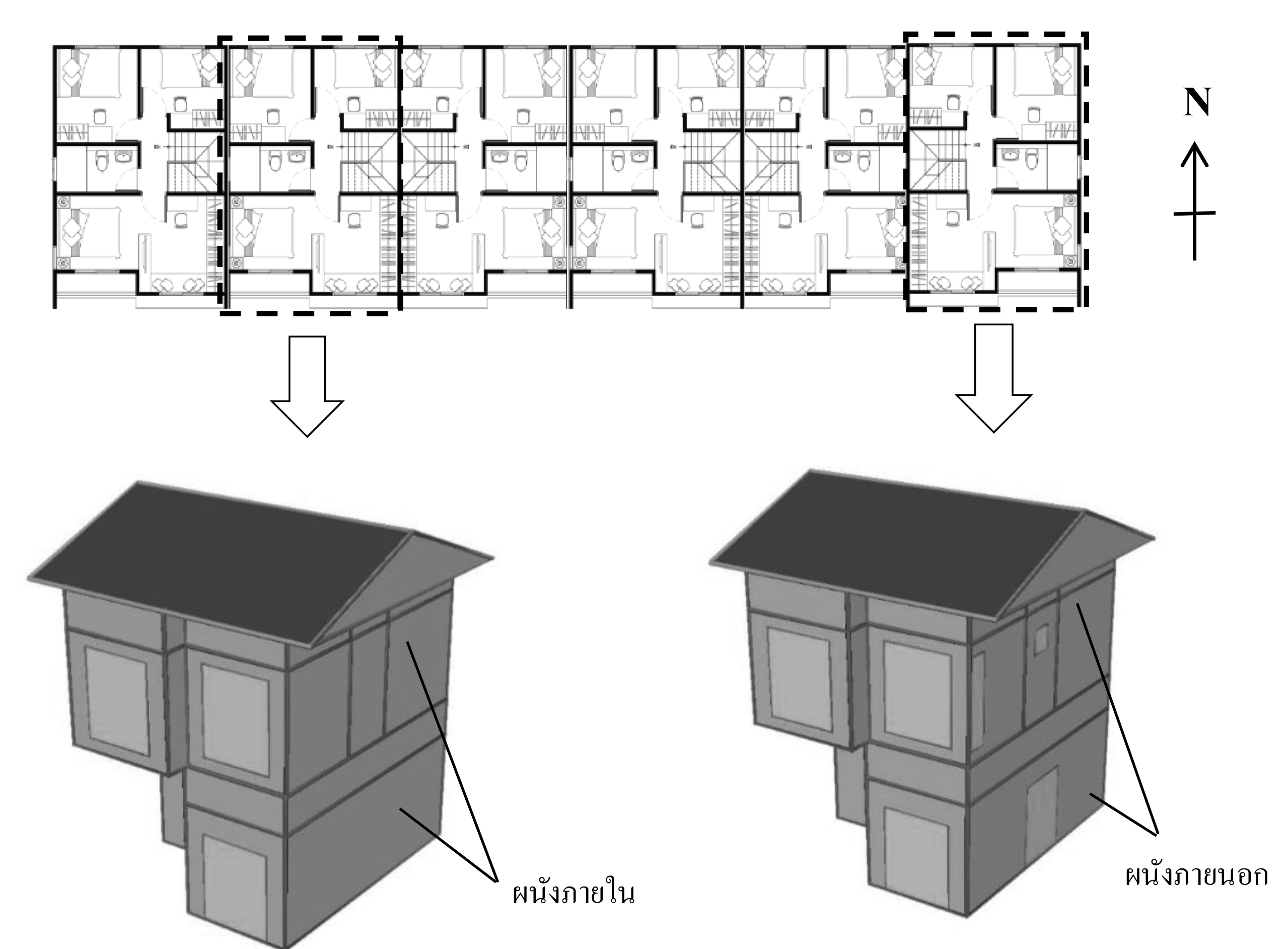Evaluation of Energy Savings by Retrofitting of the Building Envelope of Air-conditioned Row House
Main Article Content
Abstract
This research aims to evaluate the electric energy used and savings in air conditioning in the middle and end-unit row house. Simulation models of the middle and end-unit row houses were constructed in eQuest 3.65, an energy simulation program, to calculate the baseline energy consumption using the Bangkok meteorological data. The base case is derived from the survey of the row house in Pathum Thani Province and from the Building Control Act. This research created base case models and compared the simulated results with the electricity consumption collected from a row house. It was found that the average difference between the simulated results and the collected data was 10.2%. Therefore, the base case model can represent the energy consumption in the row house reasonably. After that, the three energy measures: 75-mm insulation, window overhang, and wall shading, were applied to the models facing to north, south, east and west. The study found that the end-unit row houses required high cooling load due to the heat conduction through wall. The electrical energy consumption for air conditioning in the end-unit house was higher than the middle house by 611-1,005 kWh per year. Installing of insulation with 75 mm. thickness in both walls and ceilings can reduce energy consumption by up to 21% compared to non-insulated ones. The payback period was 3-5 years. Shading of windows and wall moderately reduced the electrical energy for air conditioning while the investment cost was high. It was recommended to use the structure of the house, such as a balcony or eaves for shading instead of additional shading devices.
Downloads
Article Details

This work is licensed under a Creative Commons Attribution-NonCommercial-NoDerivatives 4.0 International License.
All material is licensed under the terms of the Creative Commons Attribution 4.0 International (CC-BY-NC-ND 4.0) License, unless otherwise stated. As such, authors are free to share, copy, and redistribute the material in any medium or format. The authors must give appropriate credit, provide a link to the license, and indicate if changes were made. The authors may do so in any reasonable manner, but not in any way that suggests the licensor endorses you or your use. The authors may not use the material for commercial purposes. If the authors remix, transform, or build upon the material, they may not distribute the modified material, unless permission is obtained from JARS. Final, accepted versions of the paper may be posted on third party repositories, provided appropriate acknowledgement to the original source is clearly noted.
References
Boon Namha Rungrueng. (2018). Installation price. Retrieved from https://bprungruang.com/
Boukhanouf, R., Robin Wilson. (2015). Space Cooling in Buildings in Hot and Humid Climates – a Review of the Effect of Humidity on the Applicability of Existing Cooling Techniques. 14th International Conference on Sustainable Energy Technologies – SET 2015 (pp. 1-10). United Kingdom: Nottingham.
Energy Policy and Planning Office. (2018). Production capacity, maximum power generation, use, import,export and fuel used in electricity generation. Retrieved from: http://www.eppo.go.th
James J. Hirsch & Associates. (2009). DOE 2.2 Building energy use and cost analysis program Libraries and Reports March 2009: Volume 4. California: Lawrence berkeley national laboratory.
Jariya Yomsatiankul, Sanwit Iabchoon and Pariwate Varnakovida. (2018). Study on Bangkok its Urban Heat Island effect and the Relationship with Electricity Consumption using Geoinformatics. BUILT Volume 12, 35-46.
King Mongkut’s Institute of Technology Ladkrabang. (2013). Report of Price list Area improvement. Bangkok:King Mongkut’s Institute of Technology Ladkrabang.
Office of the Council of State. (2000). Ministry of Law No. 55, BE 2543, issued under the Building Control Act BE 1979. Bangkok: Office of the Council of State.
Phadetphol Phongsawat and Kongkoon Tochaiwat. (2013). The required physical aspects of the townhouse housing projects on small lands for low income people. 4th BERRAC Academic Conference, 2013 (pp. 383-388). Pathum Thani: Thammasat University.
Siam Cement Group. (2016). SCG insulation STAY COOL. Retrieved from http://www.scgbuildingmaterials.com
Teerapoong Limmahakun. (2559). Characte of townhouses in Bangkok Metropolitian Area. (Master’s thesis)Chulalongkorn University. Faculty of Architecture.
Ürge-Vorsatz, D., Cabeza, L. F., Serrano, S., Barreneche, C., & Petrichenko, K. (2015). Heating and cooling energy trends and drivers in buildings. Journal of Renewable and Sustainable Energy, 41, 85-98.


